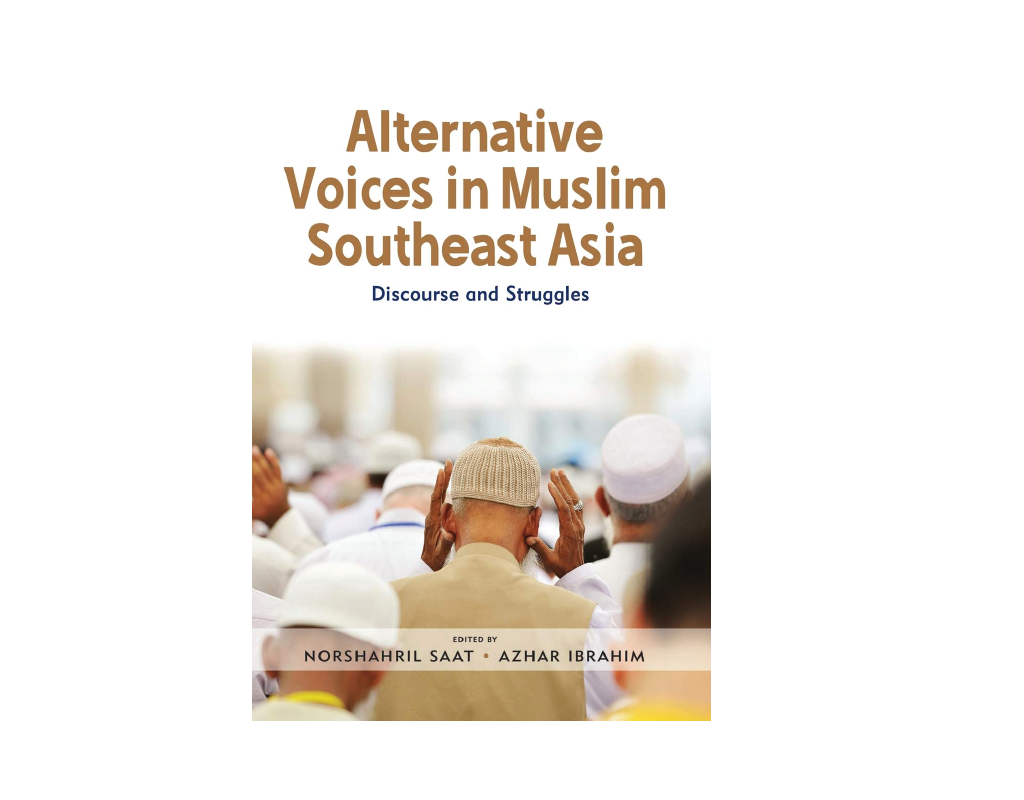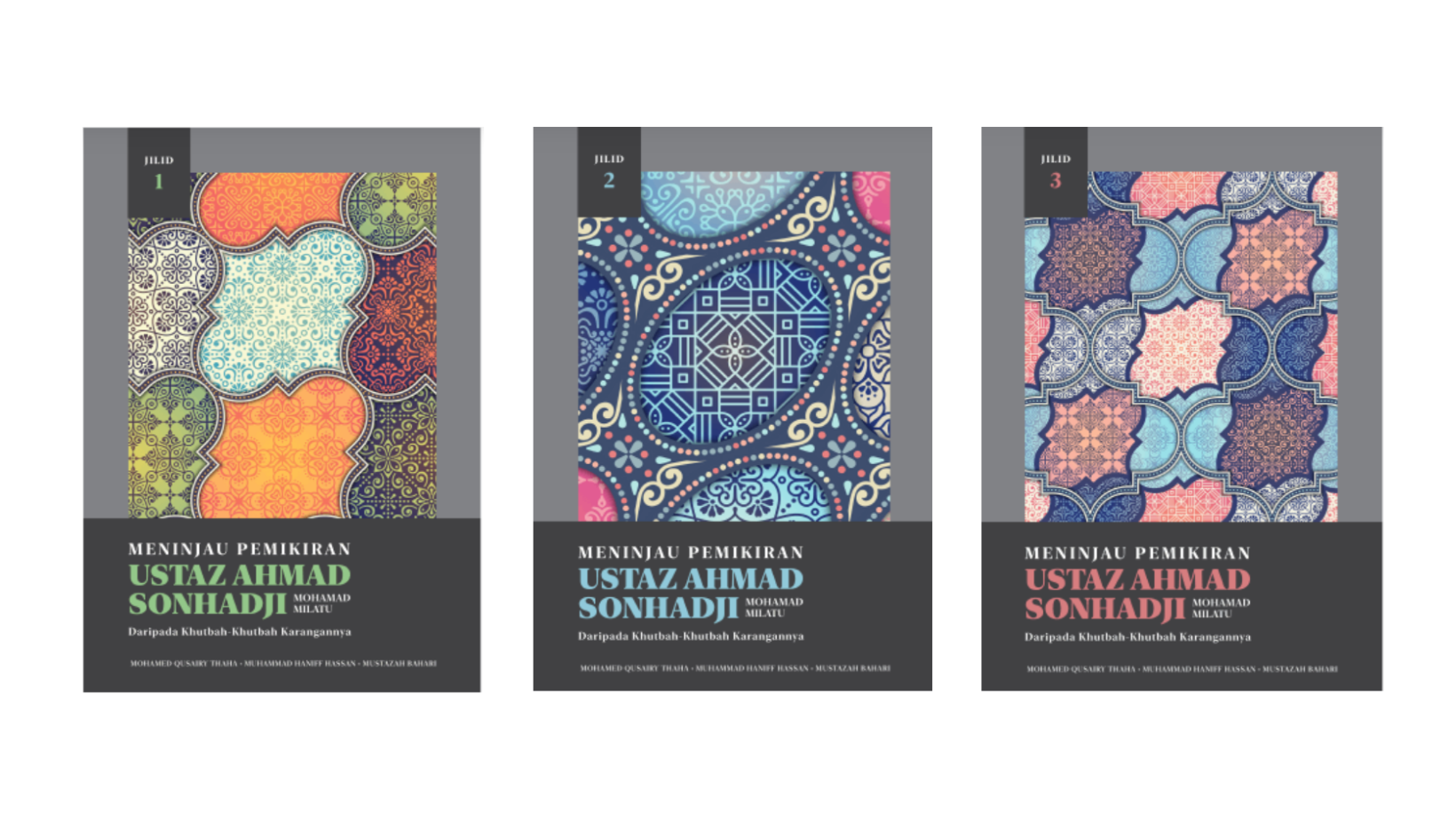Alternative Voices in Muslim Southeast Asia: Discourse and Struggles (or “Alternative Voices”), edited by Dr Norshahril Saat and Dr Azhar Ibrahim, features twelve articles written by scholars, activists, and observers of social change, that present a critique of the Muslim society of Southeast Asia today, specifically in Malaysia, Singapore, and Indonesia. Grounded perspectives on the dynamics of religious life among Muslims in Southeast Asia reveal that there are contestations of religious orientations and implications of several dominant orientations on the social, political, and economic life of society at large in Southeast Asia.
Alternative Voices challenges the many writings and observations that record Muslim life in Southeast Asia as one that adopts a relatively “moderate Islam” or a religious orientation that is accommodating to the socio-cultural life of the people in Southeast Asia[1]. The book presents a dynamic contestation of religious orientations in the public sphere that can coexist or be in conflict with one another, and explore its ramifications on the social, political, and economic lives and lived realities of Muslims in this part of the world. More importantly, the book offers nuances and ideas that are critical of the status quo and religious establishments by asking an oft-forgotten yet pertinent question of who and what are absent from our discourse and conversations on the religious life of Muslims in Southeast Asia.
DOMINANT, EXCLUSIVIST RELIGIOUS ORIENTATIONS
The issue of diverse voices also leads to the question of whether there are voices or religious orientations more dominant than others. For the writers in this book, the answer is a resounding yes. The dominant religious orientation characterised by its influence, support, and visibility in the public sphere, is increasingly one that is exclusivist and politicised in nature.
While the writers may differ on the forms in which these orientations manifest, it is clear that the impact and ramifications of the dominant religious orientations overlap and are almost the same. From the observations of several scholars and activists alike, it is apparent that there is an increasingly dominant voice representing particular religious orientations that exhibits insularity, ethno-religious exclusivism and xenophobia towards specific groups.
Regardless of how one chooses to label such exclusivist religious orientations, the relevance of this social observation is clear. In the case of Indonesia, in 2016, mass rallies protested against the Chinese-Christian Governor of Jakarta, Basuki Tjahaja Purnama, also known as Ahok, for supposedly committing blasphemy towards the Muslim faith in one of his speeches, and he was sentenced to jail. In Malaysia, many Malay-Muslims protested against the ratification of the International Convention on the Elimination of Racial Discrimination (ICERD) in 2018, which resulted in Malaysia’s withdrawal from ICERD. Even closer to home, just recently, we see the existence of xenophobic and racist religious sentiments towards the Chinese uttered by a Singapore religious leader after the recent novel coronavirus (COVID-19) outbreak[2].
In the context of this increased environment of bigotry and exclusivism, the relevance of this publication is even more pressing, amidst the lack of voices in the public sphere that go against these forms of non-violent extremism. There is naive simplicity in merely describing the conditions of Muslims in Southeast Asia and this is where the book differs: it presents a narrative that explicates what or whom are absent from the “main” narrative that is widely accepted as representative of Muslim religious life.
By presenting a narrative whereby critical voices towards the current religious establishments are marginalised or deliberately silenced, the absence of these voices in the public sphere reflects on the socio-religious conditions of Muslims, and raises many questions as to why critical ideas are pushed into the realm of the “alternative”.
THE CASE OF SINGAPORE
Alternative Voices also goes against the grain by presenting a critical evaluation of religious life and orientations of Muslims in Singapore, and their impact on other spheres of life. While there are many writings and research on Singaporean Muslims and their religious life, much of the focus has been fixated on several issues such as terrorism, wearing of tudung (veil) in the public sphere, and lived experiences as a religious minority. While these issues may stir the Singapore Muslim community once in a while, there are other overarching problems of the community that have a greater impact on their lived realities, and may even determine how the aforementioned issues are being debated, viewed, and problematised by Muslims in Singapore.
In her article on religious resurgence and its fixations and implications in Singapore, Dr Noor Aisha Abdul Rahman presents a relevant albeit long-standing phenomenon of non-violent religious resurgence in the religious life of Singaporean Muslims. The phenomenon that began in the 1970s – and which has been labeled with various terms such as ‘Islamic revivalism’, ‘dakwah movement’, or the ‘reflowering of Islam’ – is characterised by “ambivalence, dislike, opposition to or disapproval of the existing social order”, which is deemed as “un-Islamic”, i.e. inconsistent with the teachings of Islam[3]. This phenomenon arose in the context of several issues such as breakdown of trust in religious authority, moral panic arising from the increase in social ills, and disruptions in economic life.
This has undeniable impact on the Singapore Muslim community. On a surface level, the proponents of non-violent religious resurgence believe that there are “alternative” social orders consistent with the Islamic teachings, and seek to change their economic and social lifestyles towards what is “Islamic”. This includes “Islamising” almost all facets of life, whether it is “Islamising” education that is perceived as “Western”, and turning towards “Islamic banking and finance”.
However, the changes that are made to supposedly make their lifestyles more “Islamic” are more often than not, shallow and hollow attempts. Even until today, the concept of an “Islamic lifestyle” or “Islamic education” remains ambiguous, and there is no clear cut definition or guide to prove that it is any different or better than what is already offered. Dr Noor Aisha propounds that it is this lack of direction and anti-intellectualism that not only obscures and distracts from the actual problems of the community, but it presents a barrier in understanding our current predicaments.
QUESTIONING ‘ALTERNATIVE’ VOICES
Relegating critical voices as “alternatives” is also critiqued. In his essay on the challenges of developing critical reformist voices in Singapore, Dr Azhar Ibrahim explains that the presence of such ideas and ideologies have always been present in the Malay Archipelago, particularly in Singapore. The cosmopolitan nature and connectedness of the Archipelago in history have inevitably brought in various ideological influences over time, and contributed to the diversity of ideologies in this region. This goes to show that reformist ideas in society are not new, and is in fact part of the cultural fabric of Muslim religious life in Southeast Asia.
This hits at the very claim of several groups that deem reformist ideas as new, “liberal” or “un-Islamic”. The reality is that reformist values and ideas have always been reverberating in the community, and the process of making them foreign may be one of many ways of silencing and marginalising critical voices. This raises many questions: why are specific religious orientations silenced, and what does it tell of the Singapore Muslim community, their leadership, and their values when critical voices are marginalised?
The writers of this book have presented a rich account of religious diversities and explanations as to why the majority of Muslims in Southeast Asia have chosen to adopt specific, dominant religious orientations and their implications on social life. These religious orientations are dominant in that they are used to promote and support particular political motivations and actions, dominate the public sphere and influence the actions of policymakers and leadership, or tend to marginalise critical voices with alternative ideas and ideologies. The phenomenon of particular dominant religious orientations and religious resurgence can be further explored to understand ethnographic, socio-historical and economic factors that explain why Muslims would embrace certain ideologies. Dr Pradana Boy’s incisive article on religious leaders or politicians who use religion as a political tool, and their political relations and dynamic with their followers reveal that there is a need to explore the phenomenon of religious resurgence in political and social life as there are other factors that influence the people’s choice to adopt particular religio-political orientation.
CONCLUSION
Despite Islam being the dominant religion in this region, it is naive to assume that the religious orientations of the people are one and homogeneous. In reality, there are existing strands which can coexist, support each other, or in constant contestation with other strands of religious orientations.
Above that, there are religious orientations that are more dominant than others which have been taking up the spotlight and influencing the political, cultural, economic, and socio-religious life of the Muslims in Southeast Asia. Any reader of this book would learn not to underestimate the impact of these dominant religious orientations. More importantly, it tells the narratives of voices that are marginalised or unnoticed, which makes it a must-read for anyone who intends to understand the diversity and lived religious realities of Muslims in Southeast Asia. ⬛
1 Azyumardi, A. 2006. Indonesia, Islam, and Democracy: Dynamics in a Global Context. Equinox Publishing, p. 124.
2 The Straits Times, 7 February 2020. Coronavirus: MHA Investigating Religious Teacher for ‘Xenophobic, Racist’ Posts.
3 Norshahril, S. and Azhar, I. 2019. Alternative Voices in Muslim Southeast Asia: Discourse and Struggles. Iseas-Yusof Ishak Institute, p. 35.
Nur Hikmah Md Ali is a second-year undergraduate in the National University of Singapore (NUS). She is currently majoring in Malay Studies and minoring in Sociology.








